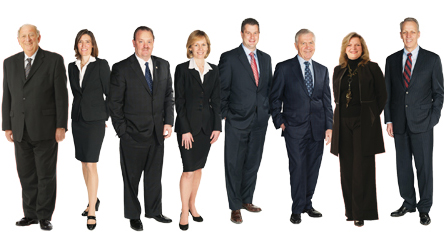HOME > OUR COMPANY > Q&A: A Conversation with Management
Q&A: A Conversation with Management

As economic challenges have unfolded over the last few years, same-store sales growth has moderated.
What do you see going forward?
We have a two-decade-long track record of same-store sales growth, and the rate of growth
tends to fluctuate from year to year. In recent years, challenging economic conditions have
led to weakened consumer confidence and intensified competition. We have responded by
adding new menu items, investing in our restaurants to improve the guest experience and
reinforcing the value we represent. Our strategy has helped sustain our positive same-store
sales record. Same-store traffic was down in Canada last year, but our guests spent more on
each transaction. We currently expect continued volatility but modest economic recovery
that, over time, should begin to restore consumer confidence.
How is Tim Hortons responding to the current challenging operating conditions?
We are responding to the current operating conditions with a multi-faceted approach. In
addition to investing in restaurant development and renovations incorporating enhanced
design elements, we are continuing to innovate through menu, marketing and operational
initiatives. We also have an active promotional calendar designed to drive traffic into our
restaurants and build on our brand positioning and strength.
Can you sustain your strong brewed coffee market share in Canada?
Tim Hortons pours nearly 8 out of every 10 cups of coffee sold at quick service restaurants in
Canada. Brewed coffee has not been growing significantly the past few years, and many market
participants are targeting the coffee category and morning daypart. We are actively focused
on sustaining our coffee leadership. At the same time, as we maintain our focus on our coffee
leadership, we are continuing our efforts to enhance our market share in other dayparts
and categories.
Is the Canadian market nearly saturated for Tim Hortons?
No, through our ongoing market assessments we believe that we have considerable
room to grow in Canada. We use sophisticated models that take account of a market’s
population, demographics, economic activity, traffic patterns and competition to assess the
viability of a potential new location. Our analysis tells us we have opportunity for at least
4,000 restaurants across the country, up from 3,436 at the end of 2012, with a focus on
Quebec, Western Canada and Ontario, and major urban centres. With our innovative
“we fit anywhere” approach, we can select a restaurant format that best matches the
needs of the local market.
Where does your U.S. business go from here?
Our U.S. business is one of the fastest growing restaurant chains in the country. We are
focused on profitable growth and that means continuing to increase sales volumes in our
restaurants. Operating income in our U.S. segment has not kept pace with our overall growth
in that country, and improving it is one of our top priorities. We are allocating our capital
to building critical mass and awareness in our core U.S. growth markets, with the goal of
increasing sales and profitability.
What is your philosophy regarding the investment of capital?
Our first priority is always investing in our business. We have been active in developing new
restaurants, and we work with our restaurant owners to improve the guest experience through
ongoing renovations and enhancements. Our operations generate strong cash flow, and we
have a history of returning a portion of that capital to our shareholders. Recent increases in
our dividend payout ratio, our quarterly dividend and our share repurchase program reflect
our confidence in the continued strength of our free cash flow.

